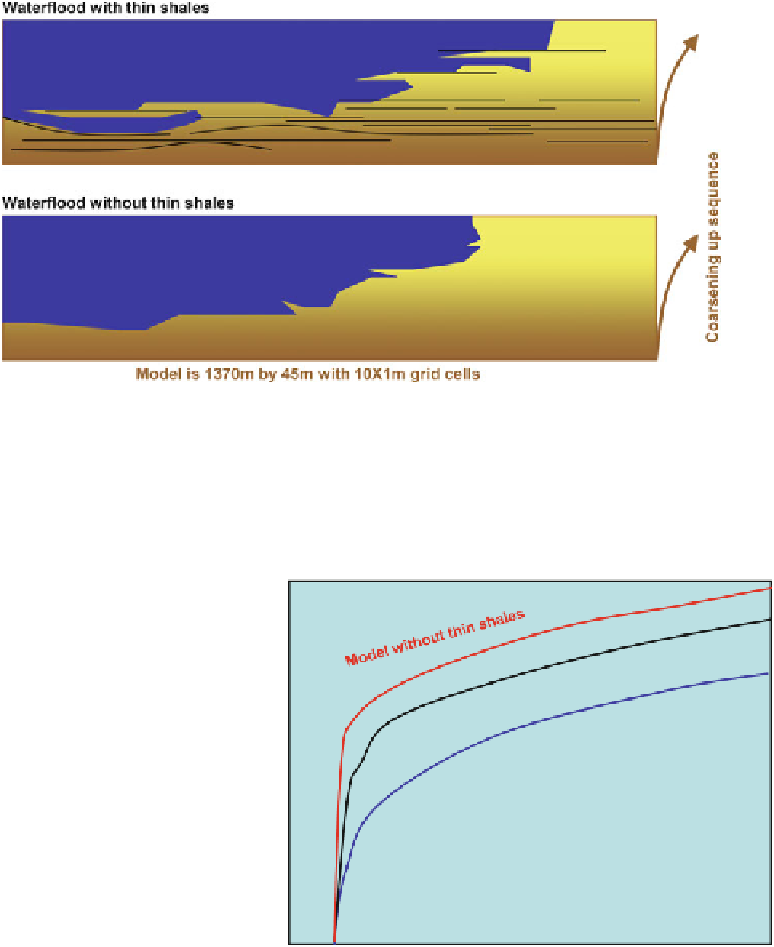Geoscience Reference
In-Depth Information
Fig. 6.20
Detailed flow modelling of a shallow marine
parasequence - Grassy member, Blackhawk Formation,
Book Cliffs, Utah. Images show waterflood flow front
(
blue
) prior to breakthrough at a producing well on the
right (Redrawn from Ciammetti et al.
1995
,
#
1994,
Society of Petroleum Engineers Inc., reproduced with
permission of SPE. Further reproduction prohibited with-
out permission)
Fig. 6.21
Oil production
profiles for three cases from
the shallow marine outcrop
simulations (Redrawn from
Ciammetti et al.
1995
);
FOPT
field oil production
total (Redrawn from
Ciammetti et al.
1995
,
#
1994, Society of
Petroleum Engineers Inc.,
reproduced with
permission of SPE. Further
reproduction prohibited
without permission)
Oil production sensitivity
3000
2000
2000
4000
6000
Time (days)
Geologically-based upscaling captures this
effect better than simple averaging and the appli-
cation of rock curves. However, failure to
include the effects of thin shales in the model,
easy to overlook in log analysis, gives a reduced
water override, and leads to an over-optimistic
estimate of oil recovery.
All these models included the effects of
capillary-dominated two-phase flow at
lamina scale (via upscaling). Omission of small-
scale lamina architecture leads to difference in
oil recovery of at least 5 % (less recovery if
small-scale effects are neglected), as shown by
the oil production curves (Fig.
6.21
). It is quite
intriguing that for this shallow-marine case
study, both the small-scale lamination and the
coarsening-up permeability profile give a posi-
tive effect on recovery. In part, this explains why
the










